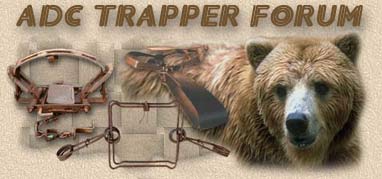We experimented and found that 36 and 30 inch long traps were not necessary. In time we went to 24 and then down to an the very short 18's which do fine for skunks and chucks, the shortest ever tried in double door traps. They take up so little space in a truck and also are much easier to place than a longer trap.
The short traps may be fine for the smaller animals, but for the trap to be most universal it needs to be larger, whether longer, taller, or wider.
For example: You can take one of our powered double door 36" x 12" tall traps (even 36x12x10) and catch beaver, otter, coon, possum, feral cats, muskrats, nutria, skunks, ground hogs, turtles and others. The traps can have one door a swing down and one a guillotine or both of each kind. The guillotine can be set as powered or gravity. They can, for a few dollars more, be changed out in the field to have a one way trigger to allow the trap to be set as a multicatch situation or just catch the animal leaving or catch the animal entering. The trap can have bait wired to the trigger or change trigger to a short trigger (down one inch and over 2") and hang the bait from a string to bite and pull.The trigger can also be changed easily to a four way or bump trigger. (the new dogs and bmi triggers work well in that application) You can't do all of what I mentioned above with a 24" trap. You can do much more with a 30", but not as much.
All of our swing down models now are made to where the doors are easily propped open for trigger adjustment or replacement. It also allows animals to be easily remove or dumped out in the double door models. The smaller (10"x12") swing downs now come with 1/2" x 1" 14ga wire.
The shorter the trap the more limits it puts on the capability of the trap over all. In specialty situations I could see a much shorter trap. Just starting out in an ADC business I would think you would want versatility.
Price is also a factor. I would think duke,s or Williams traps would be hard to beat in the price category for baited sets. The difference is the versatility of the trap for other applications. You just have to decide what that is worth. The trap may cost twice as much but your limitations aren,t the same.
----------------------------------------------------------------------------------
Jim Comstock said:
the shortest ever tried in double door traps.
I have patents that allow almost unlimited design in/of a cage trap. I guess if a statement is repeated enough, it becomes true.
Kirk DeKalb



